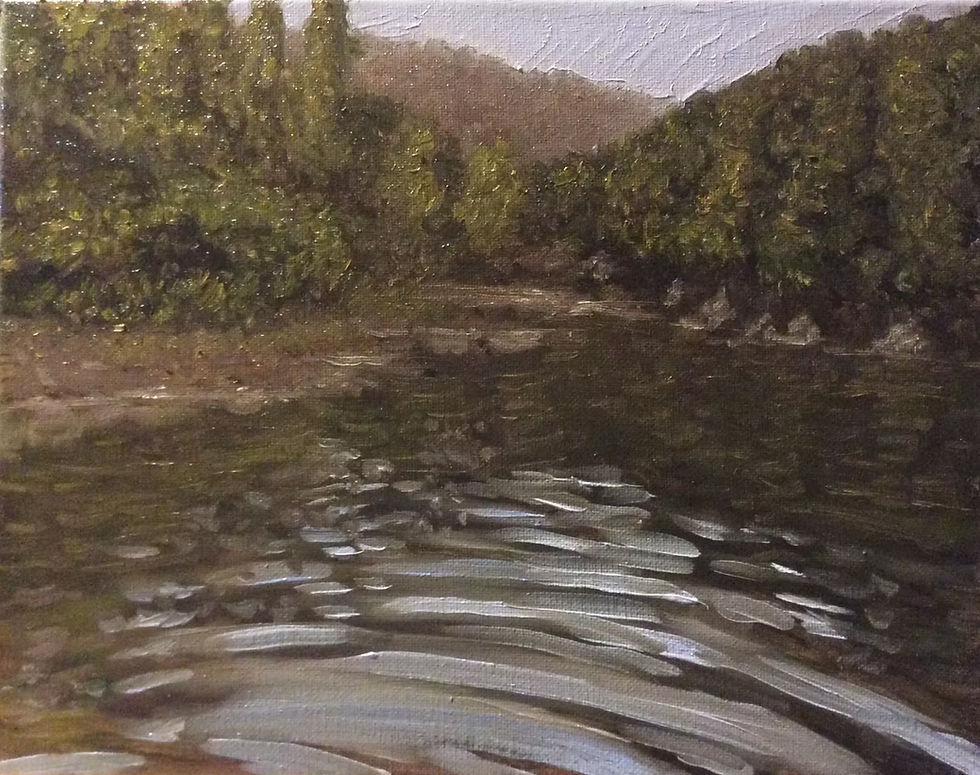The Power of Suggestion in Landscape Painting
- tmichaelniemanart

- May 6
- 2 min read
In landscape painting, it's tempting to attempt to render every leaf, every ripple, every rock with precision. We often fall into the mindset of "getting it right"—capturing the scene exactly as it is. But some of the most compelling landscape paintings are those that leave things unsaid. Why? Because they invite the viewer in.
When you leave space for suggestion, you’re not just painting a place—you’re creating a conversation.

Besides all of this, nearly everyone has a camera in their pocket so leave the photorealism behind and aim in the direction of capturing the soul of the place. Let the viewer enjoy the experience of filling in the gaps of information you leave open for interpretation.
Impression vs. Information
Painting isn’t photography. A successful painting doesn’t need to account for every detail; it needs to convey the essence of what you saw and felt. Suggestion allows the viewer’s imagination to complete the scene. A distant tree line can be indicated with a few broken brushstrokes. A shimmering lake might need only a shift in color temperature and a hint of reflected light.
The job of the landscape painter is to evoke, not explain. In fact some may say that when we are explaining, we’re losing.
Why Suggestion Works
It creates mystery. When you imply rather than describe, viewers lean in. Their brain fills in the blanks—and that process makes the painting more personal and memorable.
It adds atmosphere. Suggestive brushwork can create softness, motion, and mood far better than tight rendering.
It creates depth as simple, suggestive marks composed of less detail, in muted colors will appear to fall back in a painting
It holds focus. Detail pulls the eye. If you leave background elements suggestive, you guide attention toward your focal point.
It respects the viewer. Suggestion honors your audience’s intelligence and imagination. You’re offering an invitation, not a lecture.
Where to Use Suggestion
Background elements: Trees, hills, skies, and distant water don’t need crisp edges or complex detail.
Edges and transitions: Softening or losing edges helps blend forms and lets shapes breathe.
Textures and patterns: Indicate them loosely with gesture or color shifts—especially in grass, foliage, or rocks.
Figures and structures: A figure can be a silhouette; a building can be a block of value and shadow. If it reads, it works.
Let the Painting Breathe
Too much detail can suffocate a painting. It locks the viewer into your vision, rather than allowing space for their own emotional response. When we simplify, suggest, and imply, we create more than a visual record—we create an experience.
So next time you're out painting—especially in a wide open space—ask yourself not just what’s there, but what needs to be said… and just as importantly, what doesn’t.
Sometimes, the most powerful part of a painting is the part left unsaid.



Comments